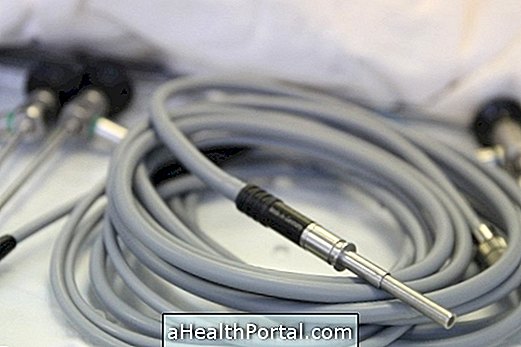Brain scintigraphy, best known as a brain perfusion tomography (SPECT) scintigraphy, is an examination done to detect changes in blood circulation and brain function, and is usually performed to aid in the identification or follow-up of brain degenerative diseases, such as Alzheimer's, Parkinson's or tumor, especially when other tests such as MRI or CT scan are not enough to confirm the suspicions.
The examination of brain scintigraphy is performed by the injection of drugs called radiopharmaceuticals or radiotracer, which are able to be fixed in the cerebral tissue, allowing the formation of the images in the apparatus.
The scintigraphy is performed by the doctor, and can be done in hospitals or clinics that perform nuclear medicine exams, with the appropriate medical request, through the SUS, some agreements, or in a particular way.


What is it for
Brain scintigraphy provides information about blood perfusion and brain function, very useful in situations such as:
- Look for dementias, such as Alzheimer's or dementia by Lewy corpuscles;
- Identify the foci of epilepsy;
- Evaluate brain tumors;
- Assist in the diagnosis of Parkinson's disease or other parkinsonian syndromes, such as Huntington's disease;
- To identify neuropsychiatric diseases such as schizophrenia, depression and obsessive compulsive disorders;
- To make an early diagnosis, control and evolution of cerebrovascular diseases such as stroke and other types of stroke;
- Confirm brain death;
- Confirm brain damage caused by the use of illicit drugs such as cocaine, crack and heroin.
Brain scintigraphy is often requested when there is doubt about the diagnosis of a neurological disease, since examinations such as magnetic resonance imaging and computed tomography, because they show more structural changes and in the anatomy of brain tissue, may not be sufficient to clarify some cases.
How is it done?
For brain scans, no specific preparation is required. On the day of the examination, the patient is advised to rest for about 15 to 30 minutes in a quiet room to minimize anxiety to ensure a better quality of the examination.
Next, the radiopharmaceutical, usually Technetium-99m or Thallium, is applied to the patient's vein, which should wait for at least 1 hour until the substance is adequately concentrated in the brain so that images are imaged on the device for about 40 to 60 minutes. In this period, it is necessary to remain still and lying down, as the movement can impair the formation of the images.
Then the patient is released for his normal activities. The radiopharmaceuticals used do not usually cause reactions or any detriment to the health of the person taking the test.
Who should not do
Cerebral scintigraphy is contraindicated for pregnant or lactating women, and should be reported in the presence of any suspicion.

























